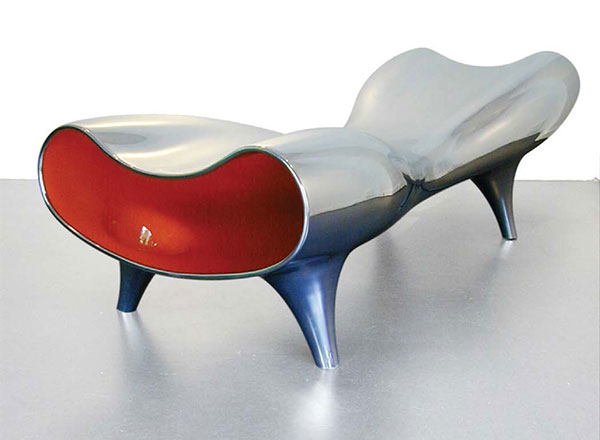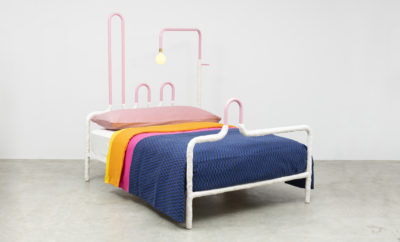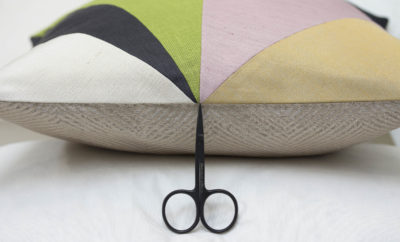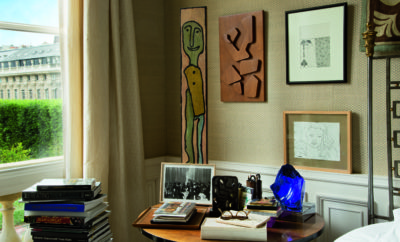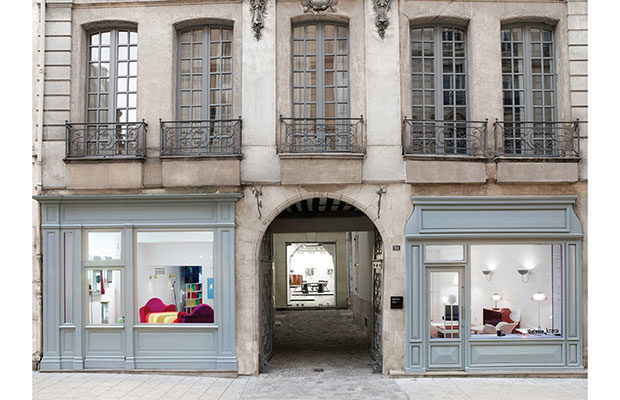 Galerie Kreo, 31 Rue Dauphine, Paris. | COURTESY GALERIE KREO
Galerie Kreo, 31 Rue Dauphine, Paris. | COURTESY GALERIE KREO
Exhibition
A Paris Gallery Fosters Innovation
NESTLED WITHIN A SEVENTEENTH-CENTURY hôtel particulier in Saint-Germain-des-Prés, on an otherwise unassuming street dotted with tabacs and sleepy jewelry boutiques, lies Galerie Kreo. This September will mark the one hundredth exhibition for Kreo—and for Clémence and Didier Krzentowski, the power duo who set up this production house for contemporary design seventeen years ago. What began as an exhibition space in the thirteenth arrondissement to showcase existing design soon morphed into the creative laboratory it is today.
In 1999 the idea of a design research laboratory that simultaneously functioned as an exhibition space was far from common. Galerie Kreo (the name comes from the Esperanto word for creation) paved the way by offering designers a chance to research and expand their creative intuitions free from the imperatives of industrial design. Each new collection and exhibition is born after months—or even years—of close collaboration with the world’s best designers; many of the resulting limited edition pieces are part of museum collections worldwide.
An intimate nucleus of designers—Marc Newson, François Bauchet, Maarten van Severen, Jasper Morrison, Hella Jongerius, and the Breton duo Ronan and Erwan Bouroullec—has grown to include younger designers such as Studio Wieki Somers and the Icelander Brynjar Sigur›arson. Today the Kreo family includes more than forty names.
The established female presence is upheld almost entirely by the Dutch. Studio Wieki Somers and Hella Jongerius create enchanting pieces that bring narrative and poetry to the ensemble, a refreshing counterpart to the somewhat sober aesthetic of the likes of Morrison and Konstantin Grcic, with their sleek functional designs that focus more on technical innovation and design solutions. While Jongerius muses on the endless possibilities of color and disguises coffee tables as four-legged creatures, Somers takes inspiration from the frozen rainfall that adorns plants and trees in her native Holland during the coldest winters. Her Frozen in Time collection, a series of cabinets, vases, and otherworldly lanterns, all possess a glacial appearance thanks to a layered resin coating. The Frozen Spring lamp has so much character that you almost expect it to turn around and start a conversation.
National culture likewise inspired Brynjar Sigurðarson’s eerily titled Silent Village collection, in which rope and colored feathers—both symbols of Icelandic fishing culture—wrap around the bare wooden legs of the tables and stools that form his first collection for the gallery.
Such collections illustrate the unique freedom that designers enjoy when collaborating with Kreo. Craig Robins, president of Design Miami, aptly describes this as Kreo’s “special touch in facilitating the design-making process by mediating between inspiring designers and manufacturers.” Galerie Kreo, he adds, led the transition “from a world in which contemporary design was almost exclusively mass produced to introduce an entirely new category of limited edition collectable design.”
In addition to contemporary work, in 2012 Kreo seamlessly wove vintage lighting into its repertoire, tapping into Didier Krzentowski’s collection of more than a thousand examples of the best Italian and French lighting, largely from the 1950s to the 1980s. The main focus of this collection is the work of the late Gino Sarfatti, a pioneer of twentieth-century lighting design, who, with the arrival of each new bulb invention, followed suit with a design that was intuitive and elegant. Krzentowski continues to pursue his passion, and Kreo is now known as a reference point for presenting the best in vintage lighting, an element of gallery life that quickly became as busy as the contemporary production.
I recently overheard an artist describe the difference between art and design as “art poses questions and design poses solutions.” Kreo’s A Piece Per Day exhibition demonstrates that the two need not be mutually exclusive and that design innovation is often most inspiring when accompanied by a strong narrative, to ensure that the most farfetched, challenging pieces relate to the viewer. For the past seventeen years Kreo has successfully pursued new realms of design innovation while never compromising on the crucial element of storytelling, and it looks forward to doing so for many years to come.


